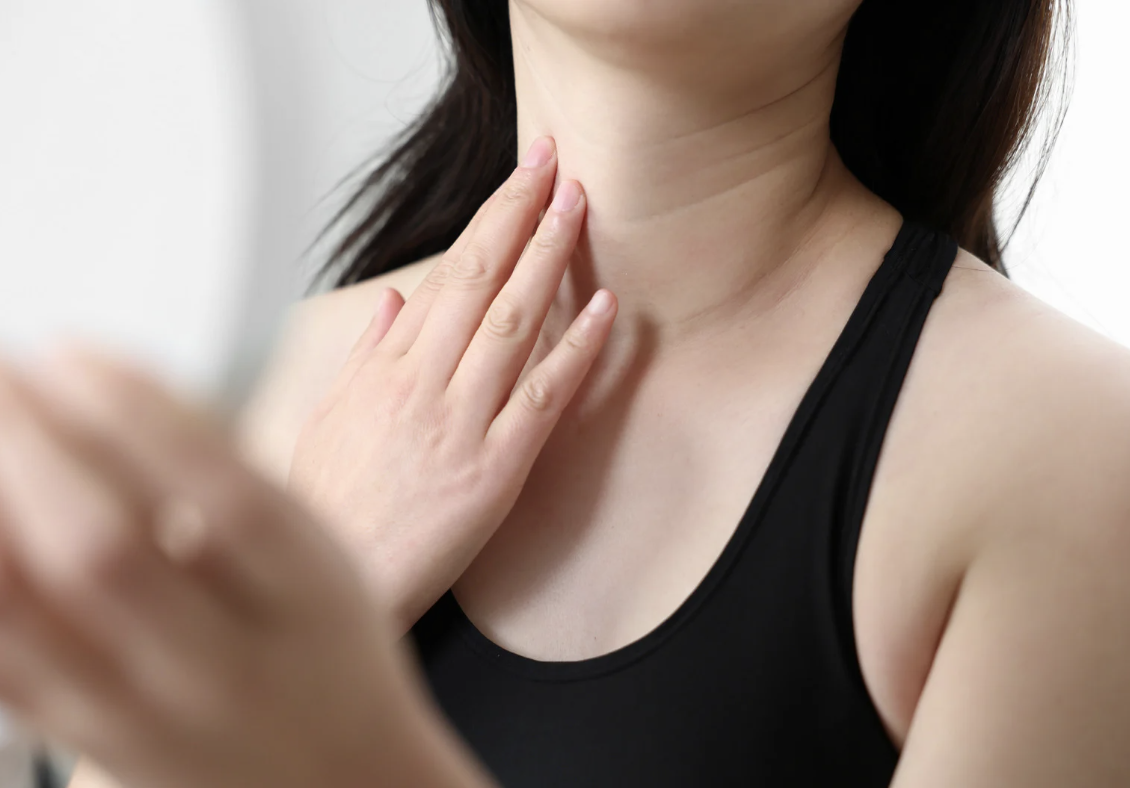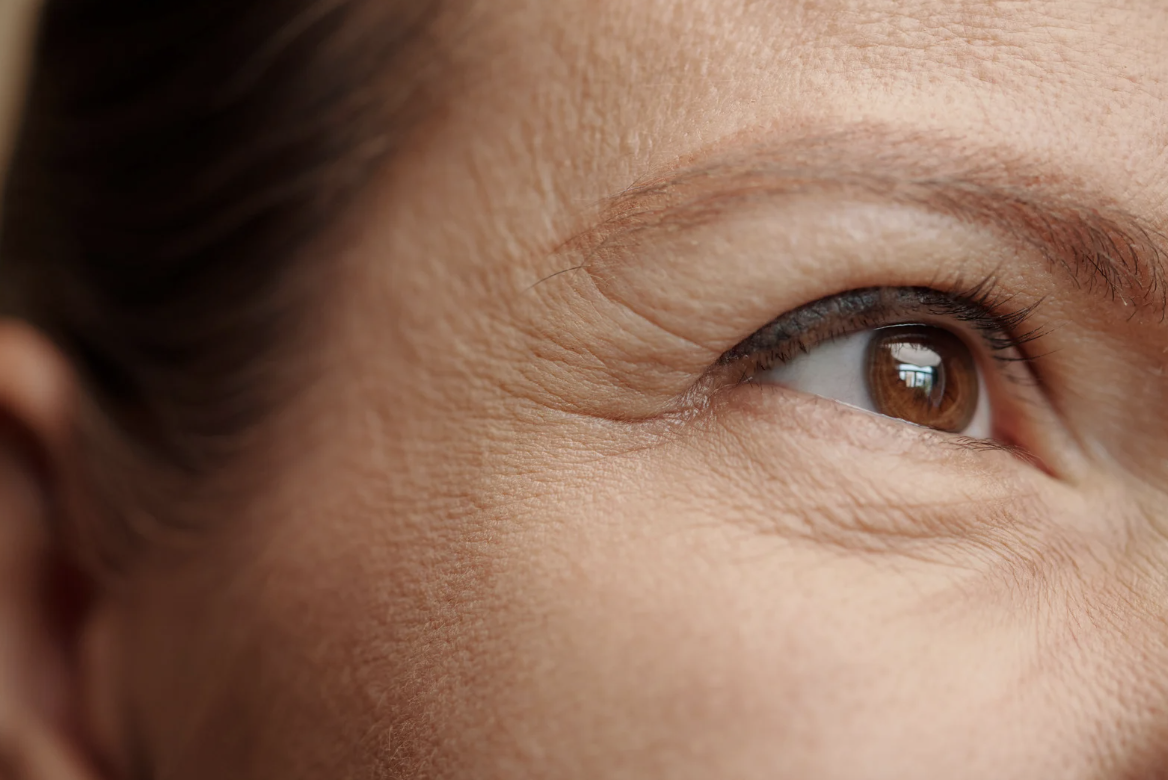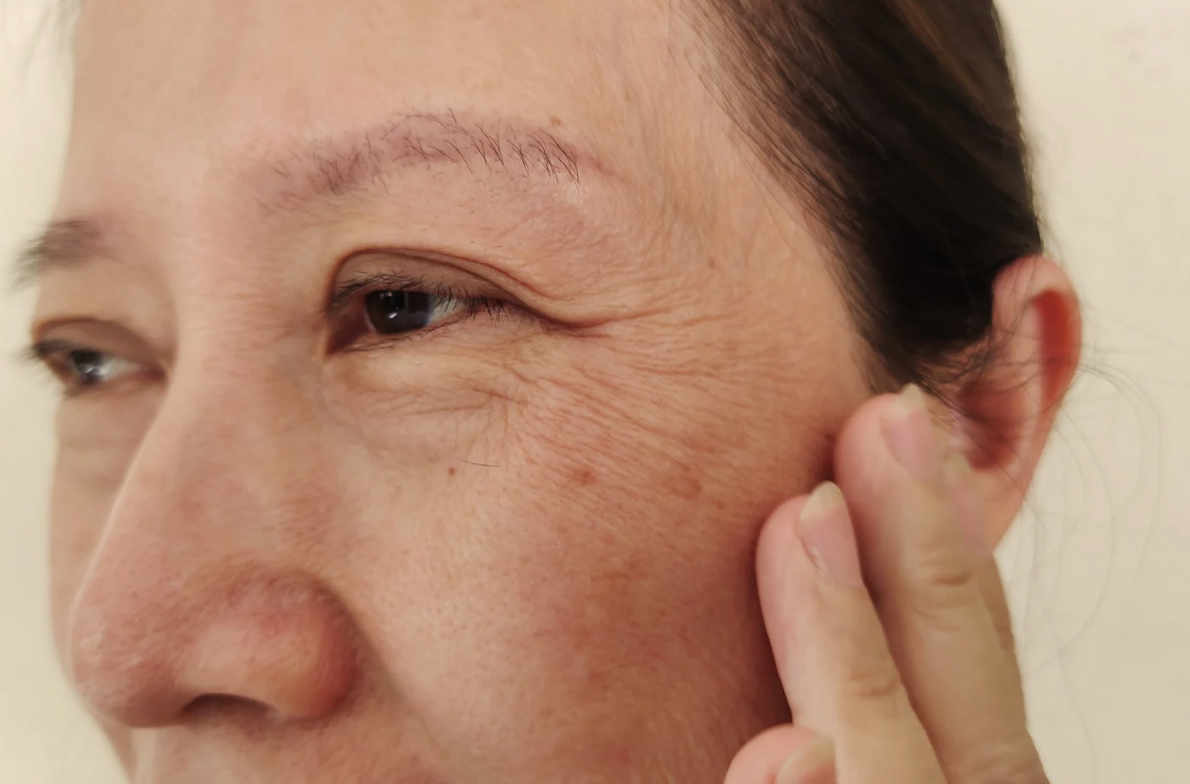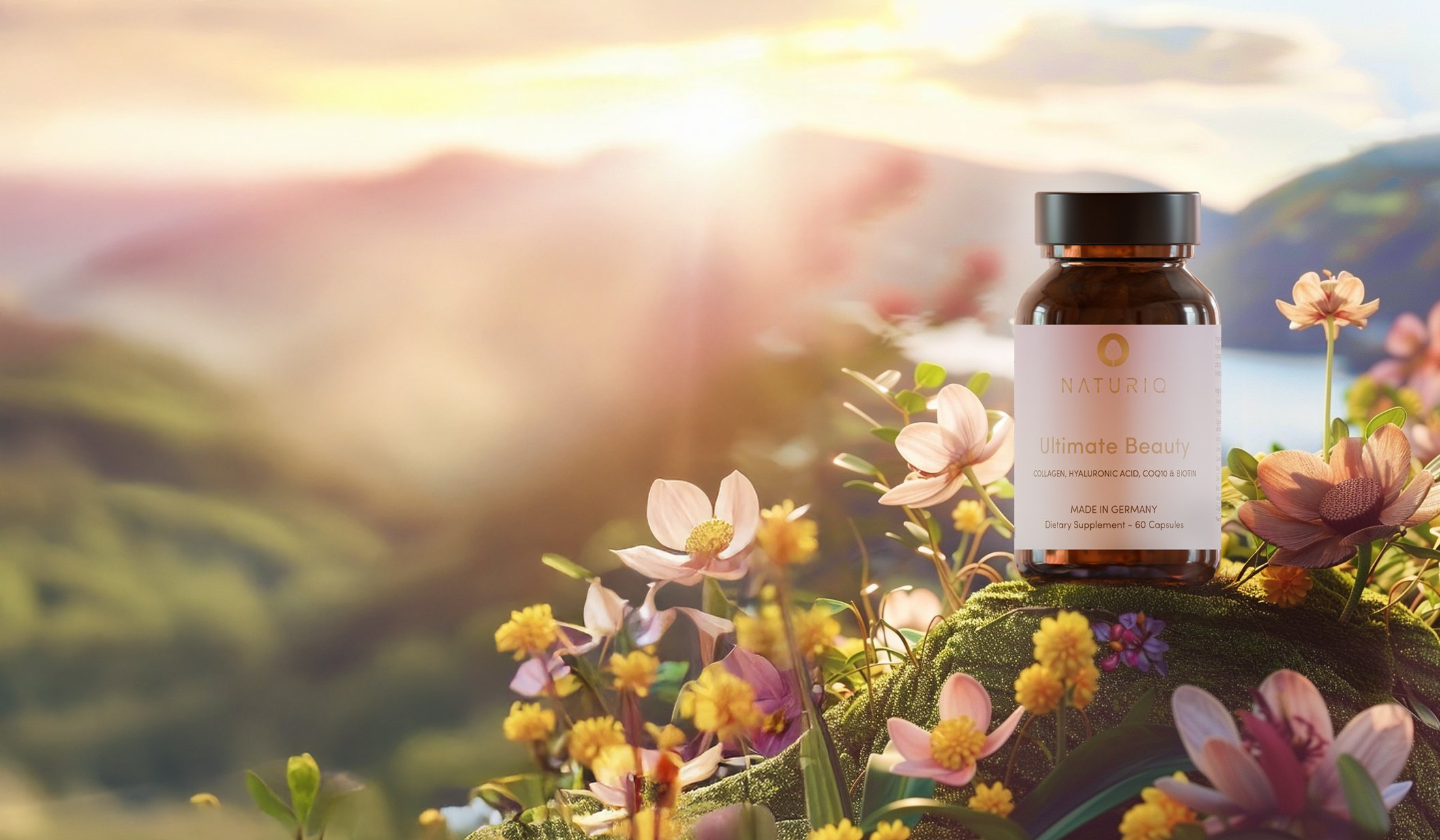
COMMON BEAUTY CHALLENGES
Premature Aging & Cellular Damage
Fine lines, uneven tone, or a fading glow—these can be early signs of premature aging, often appearing sooner than expected. Unlike natural aging, which happens gradually, premature aging is driven by daily stressors like UV exposure, pollution, and chronic stress. These factors quietly break down collagen and elastin, weakening your skin’s ability to repair and protect itself. Over time, oxidative stress builds up, slowing cell regeneration and leaving skin thinner, duller, and more fragile than it should be.
If you’re starting to notice these changes, it’s not just in your head—your skin may be showing signs of deeper strain.
SOUNDS FAMILIAR?
“Is your skin’s clock ticking faster than the calendar, hinting at hidden cellular damage?”
Why Is My Skin Aging So Fast? Premature Aging & Cellular Damage—Causes & Science-Backed Solutions
Radiant, resilient skin relies on healthy cells. Yet, research shows oxidative stress from UV light, pollution, and everyday tension can overwhelm defenses and erode collagen years before the calendar says “old.” While a gradual collagen decline is normal, accelerated dullness, fine lines, and loss of bounce signal deeper cellular damage tied to lifestyle, nutrition, and environment.
Below, we’ll spotlight the chief culprits—free-radical overload, nutrient gaps, hormonal swings, and poor sleep—and the evidence-backed strategies that help cells repair and collagen rebound: antioxidant-rich eating, daily broad-spectrum SPF, and targeted nutraceuticals such as NMN, Resveratrol, CoQ10, Vitamin C, Vitamin E, and Quercetin to keep skin firm, supple, and luminous.
-
When your antioxidant defenses and collagen-building nutrients run low, free radicals surge, DNA repair stalls, and collagen / elastin fibers unravel ahead of schedule:
Vitamin C – first-line antioxidant and collagen co-factor; low stores leave the dermis fragile.
Vitamin E – a membrane-bound shield that neutralizes free radicals and protects lipids from UV.
Protein & key amino acids (glycine, proline) – raw materials for collagen; skimping thins the skin’s scaffold.
Zinc – powers DNA-repair enzymes and tempers inflammation that speeds cellular wear.
Copper – activates lysyl oxidase, the enzyme that cross-links collagen and elastin for lasting firmness.
Omega-3 fatty acids – calm chronic inflammation that frays elastin and accelerates aging.
Vitamin D – regulates cell growth, immunity, and the skin’s repair rhythm.
Solution:
Build meals around a “rainbow” of produce, quality protein, and healthy fats, and stay well-hydrated. If labs reveal gaps, add targeted reinforcements—collagen peptides, vitamins C & E, balanced zinc/copper—plus mitochondrial guardians like NMN, resveratrol, CoQ10, and quercetin. Pair those with daily broad-spectrum SPF, 7–8 hours of sleep, stress management, and minimal sugar and smoke—an all-around shield that lets cells repair faster, slows wrinkles, and keeps skin firm and vibrant for the long haul. -
Hormonal imbalances accelerate cellular wear-and-tear and speed up skin aging at the DNA and protein levels:
Estrogen: Its plunge after menopause cuts collagen synthesis by up to 30 % in five years, thinning the dermis and weakening cellular scaffolding, which leads to early sagging and fine lines.
Cortisol (stress hormone): Chronically high cortisol activates matrix metalloproteinases (MMPs) that degrade collagen and elastin proteins, causing oxidative and inflammatory damage at the cellular level and etching deeper wrinkles sooner.
Thyroid hormones: Both hypo- and hyperthyroidism disrupt keratinocyte turnover and lipid production, leaving skin cells less able to repair UV- or pollutant-induced damage, resulting in a dull, lax appearance that signals premature aging.
Growth hormone / IGF-1: As these decline with age, fibroblast activity slows, reducing elastin and collagen repair; mitochondria underperform, increasing reactive oxygen species (ROS) and driving cellular damage that shows up as thinner, “tired” skin.
Solution:
Partner with a healthcare provider to run a full hormone panel. Evidence-based steps include:Hormone replacement (as appropriate): Estrogen or thyroid therapy can restore normal collagen formation and cellular turnover.
Stress-management protocols: Mindfulness, adequate sleep, and adaptogens (e.g., ashwagandha) help lower cortisol, reducing MMP activation and oxidative damage.
Cellular repair topicals: Retinoids or peptide serums stimulate fibroblasts to rebuild collagen and elastin at the dermal level.
Mitochondrial support: Nutraceuticals like NMN, resveratrol, and CoQ10 help protect against ROS and enhance cellular energy production, improving the skin’s ability to repair and resist premature aging.
-
Oxidative Stress & Free Radicals accelerate cellular wear-and-tear and speed up skin aging at the DNA and protein levels:
UV radiation: Generates ROS that cause DNA strand breaks and collagen degradation, leading to photoaging.
Environmental pollutants: PM2.5 and ozone trigger lipid peroxidation and protein oxidation, weakening barrier function.
Mitochondrial dysfunction: Aging mitochondria leak superoxide, increasing ROS that damage DNA and reduce ATP production.
Lifestyle habits: Smoking, excessive alcohol, and a high-sugar diet spike ROS and deplete endogenous antioxidants, hastening protein oxidation.
Solution:
Take practical steps to lower oxidative stress:Eat antioxidant-rich foods: Load up on vitamin C (citrus, berries), vitamin E (nuts, seeds), and polyphenols (green tea, leafy greens).
Use antioxidant skincare: Apply a vitamin C serum or niacinamide daily to neutralize ROS at the surface.
Practice sun protection & clean air: Wear SPF 30+ every morning; use an air purifier or mask on high-pollution days.
Maintain healthy habits: Exercise regularly (150 min/week), limit alcohol and tobacco, and aim for 7–9 hours of sleep to support nightly cellular repair.
Boost mitochondrial health: Consider NMN (250–500 mg/day), CoQ10 (100–200 mg/day), or resveratrol (150–250 mg/day) to improve energy production and reduce ROS generation.
-
Environmental toxins and UV radiation accelerate cellular wear and tear by causing DNA damage and lipid peroxidation, driving premature skin aging:
UV radiation: UVA and UVB penetrate skin, generating reactive oxygen species that create DNA lesions and trigger enzymes (MMPs) to break down collagen and elastin.
Particulate pollutants (PM2.5, ozone): Tiny airborne particles lodge in the epidermis, sparking oxidative cascades and inflammatory signals that damage lipids in cell membranes and weaken the skin barrier.
Polycyclic aromatic hydrocarbons (PAHs): Emitted from vehicle exhaust and cigarette smoke, PAHs bind to aryl hydrocarbon receptors in keratinocytes, increasing ROS production and hindering DNA repair mechanisms.
Endocrine disruptors (BPA, phthalates): Absorbed through skin contact or inhalation, these chemicals interfere with hormone pathways that regulate collagen synthesis, resulting in reduced extracellular matrix renewal.
Indoor volatile organic compounds (VOCs, formaldehyde): Emitted from cleaning agents, paints, and furnishings; chronic exposure denatures structural proteins and heightens transepidermal water loss, leaving skin dehydrated and dull.
Solution:
Take concrete steps to limit exposure and strengthen defenses:Daily sun defense: Wear broad-spectrum SPF 30+ each morning—reapply every two hours outdoors—and add a wide-brimmed hat or UV-filtering clothing.
Improve indoor air quality: Run a HEPA air purifier, open windows when pollution levels are low, and choose low-VOC or fragrance-free household products.
Opt for gentle, clean skincare: Use formulas free of parabens, phthalates, and harsh solvents; prioritize barrier-repairing ingredients (e.g., ceramides, niacinamide).
Neutralize free radicals topically: Apply an antioxidant serum (vitamin C, green tea extract) each morning to intercept ROS from UV and pollutants before they reach the deeper skin layers.
Lifestyle adjustments: Avoid outdoor activity during peak UV and pollution hours; incorporate indoor plants (e.g., snake plant) to help filter VOCs; eat plenty of colorful fruits and vegetables to boost systemic antioxidant defenses.
-
Telomere shortening and cellular senescence accelerate tissue damage by stopping cell division and triggering inflammation, resulting in premature skin aging.
Telomere attrition: Each division trims protective telomere caps until cells stop dividing.
SASP factors: Senescent cells release inflammatory cytokines (IL-6, IL-1β) and MMPs that degrade collagen and disrupt tissue.
Bystander effect: SASP signals induce neighboring cells into senescence, amplifying inflammation and reducing collagen synthesis.
Skin impact: Accumulated senescent fibroblasts thin the dermis, slow repair, and manifest as fine lines, uneven texture, and loss of firmness.
Solution:
Support telomeres: Exercise regularly (150 min/week), practice daily stress reduction, get 7–9 hours of sleep, and eat omega-3– and polyphenol-rich foods (e.g., fish, berries).
Reduce SASP: Include quercetin (onions, apples) and fisetin (strawberries) to help clear senescent cells, plus anti-inflammatory nutrients like curcumin and resveratrol.
Topical turnover: Use retinoids to boost cell renewal, reducing senescent keratinocytes and stimulating collagen.
Antioxidant protection: Maintain vitamin C/E intake to shield telomeres from oxidative damage and support overall repair.
The Bottom Line
Premature aging isn’t just a surface issue—it reflects your cells’ internal health. By reducing oxidative stress, limiting toxin exposure, supporting telomere integrity, and balancing hormones and lifestyle, you’re investing in more than just youthful skin; you’re strengthening your overall vitality, and this commitment will reveal stronger, healthier skin and a more vibrant you.
Antioxidants, mitochondrial support, and hormone balance fight premature cellular aging.
FAQs
-
Oxidative stress: Accumulation of free radicals damages DNA, proteins, and cell membranes.
UV radiation & environmental pollution: Break down collagen, induce DNA lesions, and trigger inflammation.
Hormonal imbalances: Declines in estrogen, elevated cortisol, thyroid dysfunction, and lower GH/IGF-1 levels.
Glycation & AGEs: Excess sugar binds to proteins, stiffening and reducing tissue elasticity.
Telomere shortening & senescence: Telomere attrition halts cell division, and senescent cells release inflammatory factors.
-
Premature aging isn’t just about age—it’s also driven by chronic stress, poor sleep, nutrient deficiencies, UV exposure, and free-radical damage. These factors can lead to dull skin, early wrinkles, and reduced vitality even in younger individuals.
-
While pregnancy temporarily increases oxidative stress and mitochondrial demand, adequate nutrition (antioxidants, omega-3s), proper sleep, and stress management can preserve telomere length. Postpartum recovery, including replenishing micronutrients (iron, folate) and supporting hormonal balance, helps prevent accelerated cellular wear-and-tear.
-
Skin changes: Thinner, drier, less elastic skin; fine lines and dark spots appear; texture becomes rough or dull.
Barrier issues: Increased fragility—bruising or tearing easily—and slower healing of cuts or bruises.
Low energy & immunity: Persistent fatigue despite rest and more frequent or prolonged infections.
-
Yes. Emphasizing foods high in quercetin (onions, apples), fisetin (strawberries), and curcumin (turmeric) helps gently clear senescent cells. Combined with regular exercise, adequate sleep, and moderate stress-relief practices, these dietary choices support healthier aging for women experiencing hormonal shifts.
READY TO GLOW?
Ultimate Beauty
Ultimate Beauty is our science-backed supplement made in Germany to support healthy skin, strong hair, and radiant nails from within.
-
Crafted to the highest standards with premium ingredients and strict quality control, because your body deserves nothing less.
-
Every capsule is powered by nutrients proven to support glowing skin, strong hair, and healthy nails—from Vitamin A to CoQ10.
-
Trusted by real women. Loved for visible improvements in skin texture, hair strength, and overall glow—naturally and effectively.
What Experts Say







